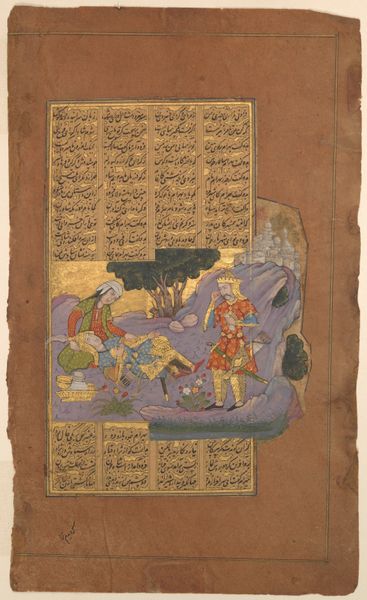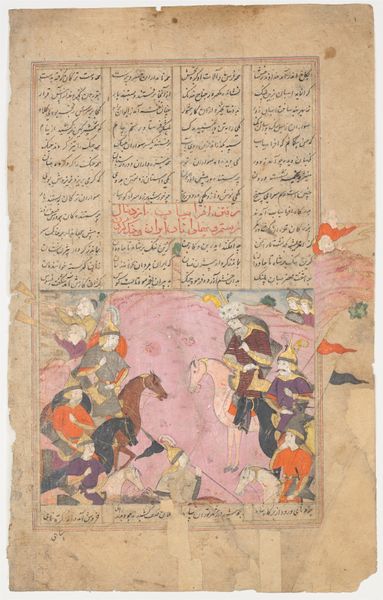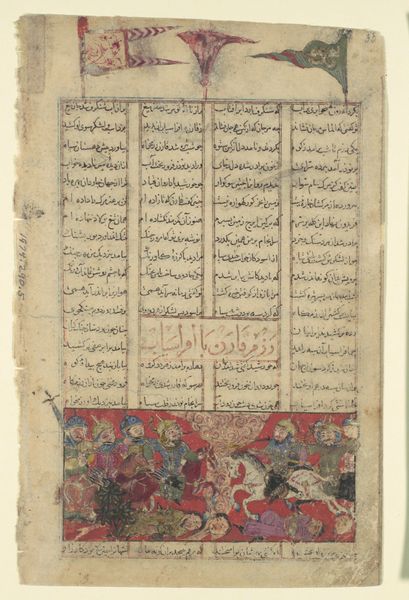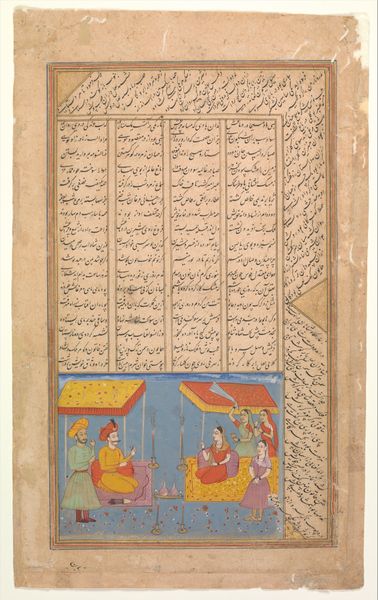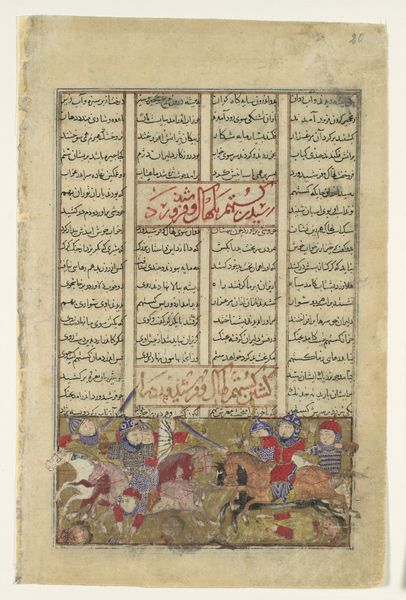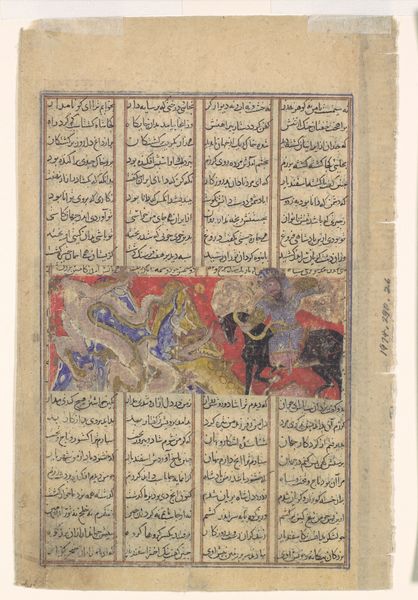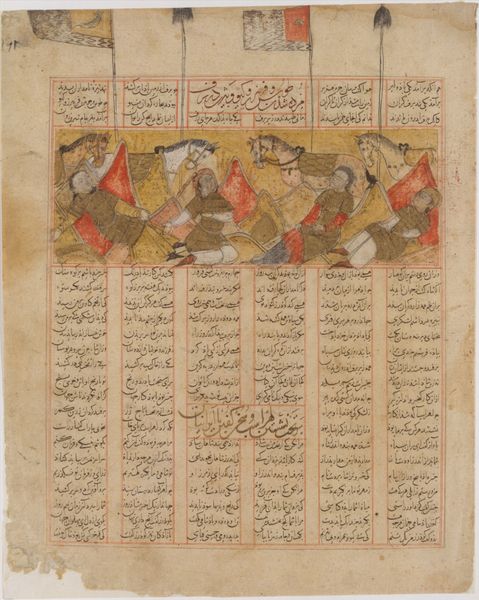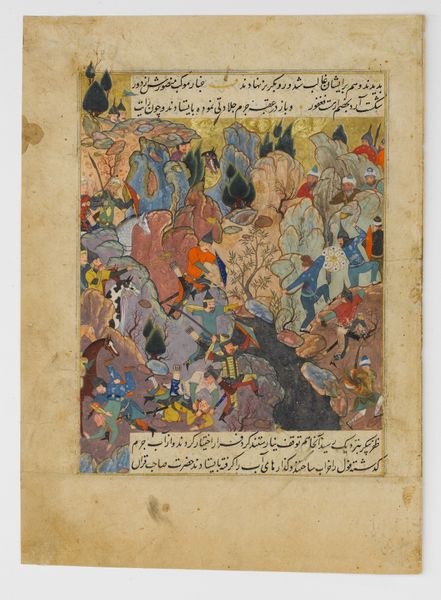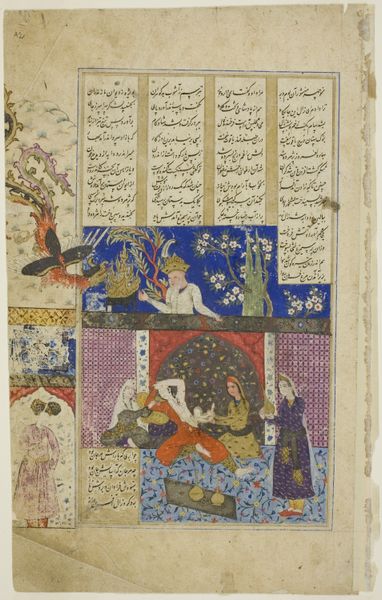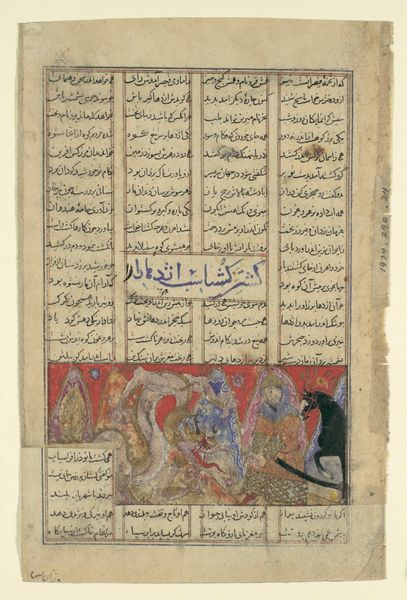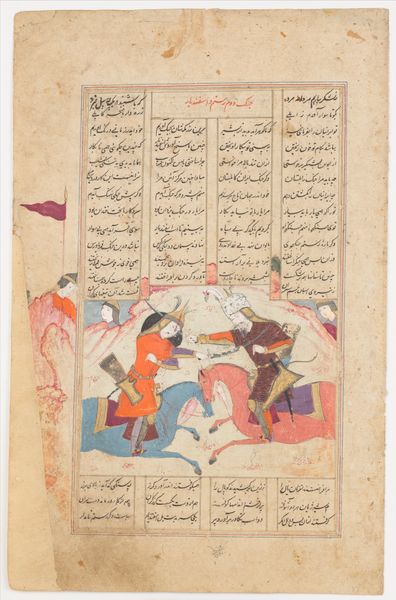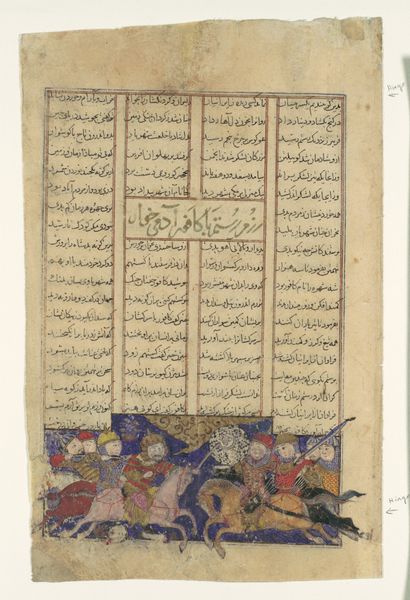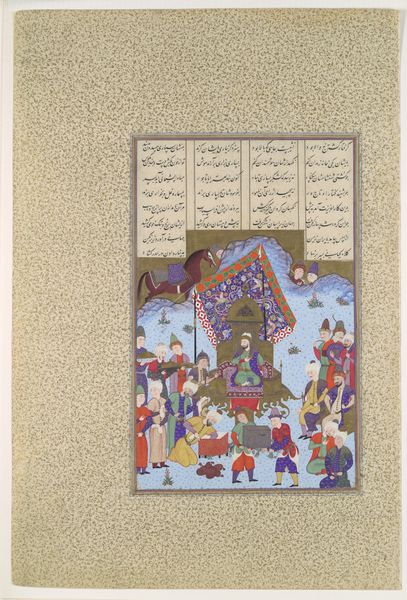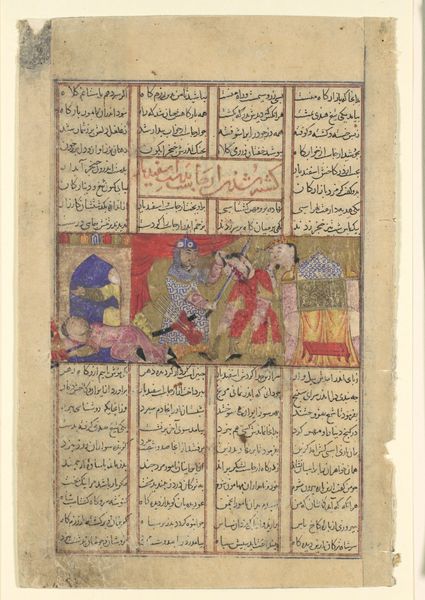
"Suhrab Slain by Rustam", Folio from a Shahnama (Book of Kings) of Firdausi 1585 - 1635
0:00
0:00
painting, watercolor
#
narrative-art
#
painting
#
figuration
#
watercolor
#
horse
#
men
#
islamic-art
#
miniature
Dimensions: Page: H. 8 in. (20.3 cm) W. 4 13/16 in. (12.2 cm) Painting: H. 2 5/8 in. (6.7 cm) W. 3 1/8 in. (8 cm)
Copyright: Public Domain
Curator: This watercolor painting, likely created between 1585 and 1635, depicts "Suhrab Slain by Rustam" and originates from a Shahnama, or Book of Kings, by Firdausi. It's currently housed at the Metropolitan Museum of Art. Editor: Oh, my heart! Just looking at this, the sheer *weight* of grief practically radiates off the page. The stillness in the figure on the ground… it’s like a silent scream. Curator: Precisely. This folio captures a pivotal moment from the Persian epic: the tragic climax of the story of Rustam and Suhrab. Blinded by deception, Rustam unwittingly slays his own son in combat. Consider the layered identities at play – father and son, hero and tragic figure – and how those power dynamics intersect within a narrative steeped in themes of fate, honor, and loss. Editor: The horses, though! Their faces are incredible. That stunned bewilderment, almost like they *understand* the horror that’s just unfolded. There’s such a sharp contrast between the ornate detail of the horses and garments, almost excessively luxurious, and the raw simplicity of the sorrow. Curator: Yes, that tension is key. Notice the careful rendering of detail. It exemplifies the sophisticated aesthetic prevalent in Persian miniature painting of that period, yet, these stylistic refinements highlight the emotional complexity embedded within the narrative itself. Think about the context. It's not merely a visual representation. It reflects the social, political, and ethical values circulating within the culture that produced it. Editor: So, do you think an audience unfamiliar with the Shahnama will still connect with this image? Curator: Absolutely. While prior knowledge enhances understanding, the fundamental themes of familial conflict and the consequences of deception resonate universally. Art serves as a space to analyze these complex dimensions of human existence, both historically and in the present. Editor: You’re right. Looking at it now, that primal ache, that devastating knowledge...it hits you whether you know the story or not. This tiny watercolor holds a whole universe of pain. It's unexpectedly affecting.
Comments
No comments
Be the first to comment and join the conversation on the ultimate creative platform.
